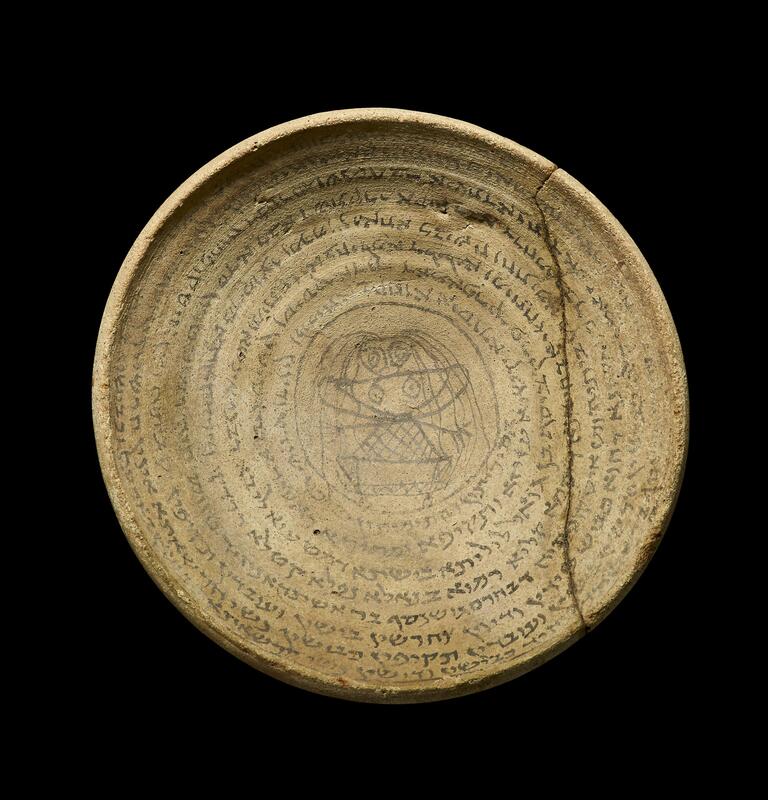Adam's First Wife
The Alphabet of Ben Sira (written between 700 and 1000 CE) was an anonymous work of Midrash–a method of biblical interpretation focused on making the [Torah or Bible] relevant to current social structures and belief systems, typically through the use of legends, homilies, and folklore. This adaptation of Lilith’s story clearly reflects the historical context of the rigid gender roles and high infant mortality present in the medieval world. This particular characterization of Lilith was also used extensively as a warning that women should not rebel against their husbands or else their children would die.
According to The Alphabet, amulets provide adequate protection against Lilith. Many of these amulets contained the name of the mother or child one wanted to protect, encircled by the names of the angels Senoy, Sansenoy, and Semangelof. The amulet pictured to the left follows this traditional style, even though it dates to the 19th century.
The Alphabet was created directly after the Talmudic period (around 100 to 600 CE), which was the height of rabbinic Midrash and the subsequent compilation of Jewish folklore. The end of this period also witnessed a rise in the use of incantation bowls against Lilith and all manner of demons referred to as liliths. The magical inscriptions on these pottery bowls were generally written in a spiral from the inside to the edge, protecting men, women, and entire households from Lilith, who–before being immortalized as the first wife of Adam–was known to be a succubus. On several bowls, including the one pictured to the right, Lilith is depicted in chains with her signature long, loose hair.

